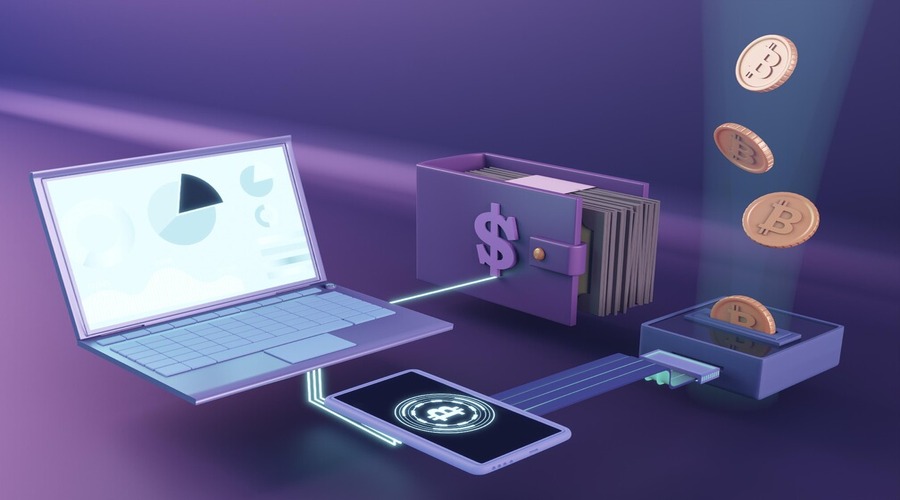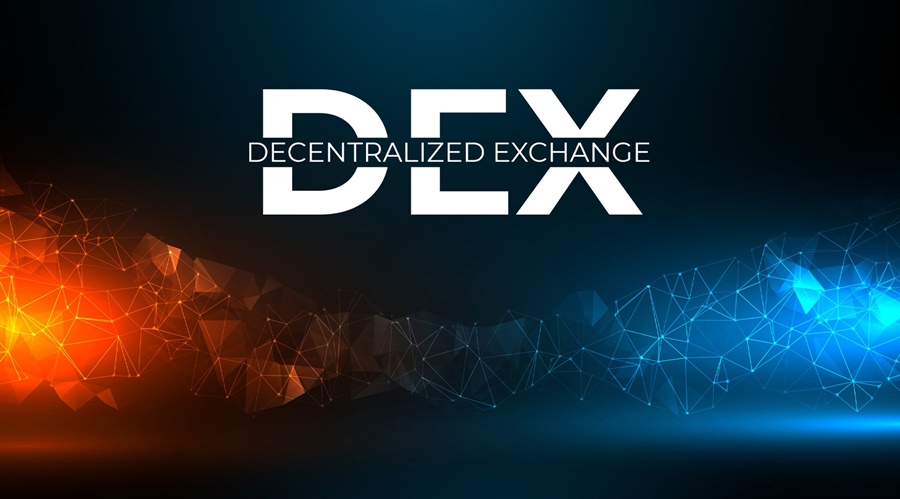As the world of finance continues to evolve, decentralized finance (DeFi) has emerged as a groundbreaking concept that promises to reshape the traditional financial system. DeFi platforms enable users to access financial services without the need for intermediaries, offering increased transparency, efficiency, and accessibility. However, with the growing popularity of DeFi, ensuring the security of these platforms becomes paramount. In this article, we will delve into the architecture of DeFi platforms and explore how enhanced security measures can be implemented to protect users and their assets.
Introduction to DeFi
Decentralized finance, or DeFi, is a groundbreaking concept that leverages blockchain technology to revolutionize the traditional financial system. Unlike traditional finance, which relies on intermediaries such as banks and brokers, DeFi enables individuals to access financial services in a decentralized and permissionless manner.
DeFi platforms utilize smart contracts, which are self-executing agreements written on blockchain networks like Ethereum. These smart contracts automate the execution of financial transactions, eliminating the need for intermediaries and enabling direct peer-to-peer interactions.
The key advantages of DeFi include increased transparency, accessibility, and efficiency. DeFi platforms offer a wide range of financial services, including lending and borrowing, decentralized exchanges, yield farming, and asset management. Users can participate in these services using digital assets, and they have full control over their funds at all times.
DeFi is driving financial inclusion by providing services to individuals who are unbanked or underserved by traditional financial institutions. It promotes financial sovereignty, offering users the opportunity to manage their assets without relying on centralized authorities. As DeFi continues to evolve, it has the potential to reshape the global financial landscape, making financial services more accessible, transparent, and efficient for everyone.
Benefits of DeFi
- Financial Inclusion:
- DeFi opens up financial services to individuals who are unbanked or underbanked, providing access to financial tools and services without relying on traditional institutions.
- Accessibility:
- DeFi platforms are open 24/7 and accessible to anyone with an internet connection and a compatible device.
- Users can participate in DeFi activities, such as lending, borrowing, and trading, from anywhere in the world, promoting global financial inclusivity.
- Transparency:
- DeFi operates on blockchain technology, which ensures transparency and immutability of transactions.
- Users can verify and track transactions on the blockchain, enhancing trust and accountability.
- Peer-to-Peer Transactions:
- DeFi eliminates the need for intermediaries, enabling direct peer-to-peer transactions.
- This reduces transaction costs and processing times, as well as counterparty risks associated with centralized intermediaries.
- Programmable Money:
- DeFi platforms utilize smart contracts, enabling the automation of financial agreements and transactions.
- Users can create customized financial products and services, increasing flexibility and efficiency in managing their assets.
- High Liquidity:
- DeFi platforms provide liquidity through decentralized exchanges (DEXs) and lending protocols.
- Users can easily trade, swap, or lend their assets without relying on centralized exchanges or banks.
- Yield Generation:
- DeFi offers opportunities for users to earn passive income through yield farming, staking, or providing liquidity to lending protocols.
- Users can earn rewards or interest on their assets, potentially outperforming traditional savings accounts or investment options.
- Security:
- DeFi platforms leverage blockchain technology, which provides robust security through decentralized consensus mechanisms.
- Smart contracts and cryptographic algorithms ensure the integrity and security of transactions and user funds.
- Permissionless Innovation:
- DeFi platforms foster innovation by allowing developers to build decentralized applications (dApps) on open protocols.
- This encourages a vibrant ecosystem where new financial products and services can be created, tested, and improved upon.
- Global Accessibility:
- DeFi transcends geographical boundaries, enabling individuals worldwide to access financial services.
- It empowers individuals in developing countries with limited banking infrastructure to participate in global financial markets.
The benefits of DeFi extend beyond traditional financial systems, empowering individuals, promoting financial inclusion, and revolutionizing the way financial services are accessed and utilized.
DeFi Platform Architecture Overview
DeFi platforms are typically built on smart contract-enabled blockchains, such as Ethereum. These platforms leverage the decentralized nature of blockchain technology to provide financial services in a trustless and permissionless manner. The architecture of a DeFi platform consists of several key components:
Smart Contracts: The Foundation of DeFi
Smart contracts play a vital role in DeFi platforms by automating the execution of financial agreements. These self-executing contracts are programmed to enforce the terms and conditions agreed upon by the involved parties. Smart contracts enable the seamless execution of transactions, lending protocols, decentralized exchanges, and other DeFi applications.
Decentralized Exchanges (DEXs)
Decentralized exchanges are an essential component of the DeFi ecosystem. They facilitate the peer-to-peer exchange of digital assets without the need for intermediaries. DEXs utilize smart contracts to match buy and sell orders, allowing users to trade directly from their wallets. By eliminating the reliance on centralized exchanges, DEXs enhance security and give users full control over their funds.
Lending and Borrowing Protocols
DeFi lending and borrowing protocols enable individuals to lend their assets to earn interest or borrow assets by providing collateral. These protocols utilize smart contracts to automate the lending and borrowing process, removing the need for traditional financial institutions. Lending and borrowing in DeFi are typically overcollateralized to mitigate default risks.

Security Challenges in DeFi
While DeFi presents numerous advantages, it also faces significant security challenges. As DeFi platforms involve the management of user funds and the execution of financial transactions, any vulnerability in the underlying architecture can result in substantial financial losses. Some of the common security challenges in DeFi include:
Smart Contract Vulnerabilities
Smart contracts are susceptible to coding errors and vulnerabilities. Exploiting these vulnerabilities can lead to unauthorized fund transfers or manipulation of contract logic. The decentralized nature of DeFi platforms makes it challenging to revert transactions once they are executed.
Oracle Manipulation
DeFi platforms often rely on oracles to retrieve real-world data for executing smart contracts. Manipulating oracles can lead to inaccurate data inputs, which can be exploited to gain financial advantage or disrupt the platform’s operations.
Centralized Points of Failure
Although DeFi aims to eliminate intermediaries, some platforms still rely on centralized components, such as off-chain price feeds or custodial wallets. These centralized points of failure introduce security risks, as they can be targeted by malicious actors.
Mitigating Security Risks in DeFi Platforms
To enhance security in DeFi platforms, several measures can be implemented. Here are some key strategies:
Multi-signature Wallets
Multi-signature wallets require multiple cryptographic signatures to authorize transactions. By utilizing multi-signature wallets, DeFi platforms can add an extra layer of security, as it would require the cooperation of multiple key holders to execute a transaction.
Code Audits and Bug Bounties
Conducting thorough code audits and establishing bug bounty programs can help identify vulnerabilities and weaknesses in the smart contracts and platform code. Offering incentives to security researchers and ethical hackers encourages them to discover and report vulnerabilities before they can be exploited.
On-chain Governance and Security Upgrades
Implementing on-chain governance mechanisms allows token holders to participate in decision-making processes and vote on security upgrades. This ensures that security measures can be promptly implemented and adjusted to address emerging threats.
Insurance and Risk Management
DeFi platforms can collaborate with insurance providers to offer coverage against potential losses resulting from smart contract vulnerabilities or hacks. Insurance helps protect users’ funds and provides an additional layer of confidence in the platform’s security.
The Role of Decentralized Identifiers (DIDs)
Decentralized Identifiers (DIDs) offer a unique and secure way to establish verifiable digital identities. By incorporating DIDs into DeFi platforms, users can have greater control over their personal information and reduce the risk of identity theft or impersonation.
Interoperability and Security
Interoperability between different DeFi platforms can enhance security by enabling the sharing of security best practices and protocols. Collaboration and information exchange among platforms can help address common security challenges and foster a more secure DeFi ecosystem as a whole.
Regulatory Considerations for DeFi
Regulatory compliance is crucial for the long-term sustainability of DeFi platforms. By proactively addressing regulatory concerns and working with regulators, DeFi projects can foster trust and legitimacy within the broader financial landscape.
Conclusion
DeFi platforms offer exciting opportunities to revolutionize the financial industry by providing open, transparent, and accessible financial services. However, ensuring the security of these platforms is of utmost importance to protect users and their assets. By implementing robust security measures, such as multi-signature wallets, code audits, on-chain governance, and insurance, DeFi platforms can enhance their security posture and build trust among users. As the DeFi space continues to evolve, ongoing efforts to address security challenges and embrace best practices will be vital in shaping a more secure and resilient DeFi ecosystem.
FAQs
- Q: How does decentralized finance differ from traditional finance? A: Decentralized finance eliminates intermediaries and enables direct peer-to-peer transactions, providing increased transparency and accessibility compared to traditional finance.
- Q: What are the main security challenges in DeFi platforms? A: Some of the main security challenges in DeFi platforms include smart contract vulnerabilities, oracle manipulation, and centralized points of failure.
- Q: How can multi-signature wallets enhance security in DeFi? A: Multi-signature wallets require multiple cryptographic signatures to authorize transactions, adding an extra layer of security by requiring collaboration among key holders.
- Q: What role do code audits and bug bounties play in DeFi security? A: Code audits and bug bounties help identify vulnerabilities and weaknesses in the platform’s code, allowing them to be addressed before they can be exploited.
- Q: Why is regulatory compliance important for DeFi platforms? A: Regulatory compliance ensures the long-term sustainability of DeFi platforms by fostering trust, legitimacy, and collaboration with traditional financial institutions and regulators.




